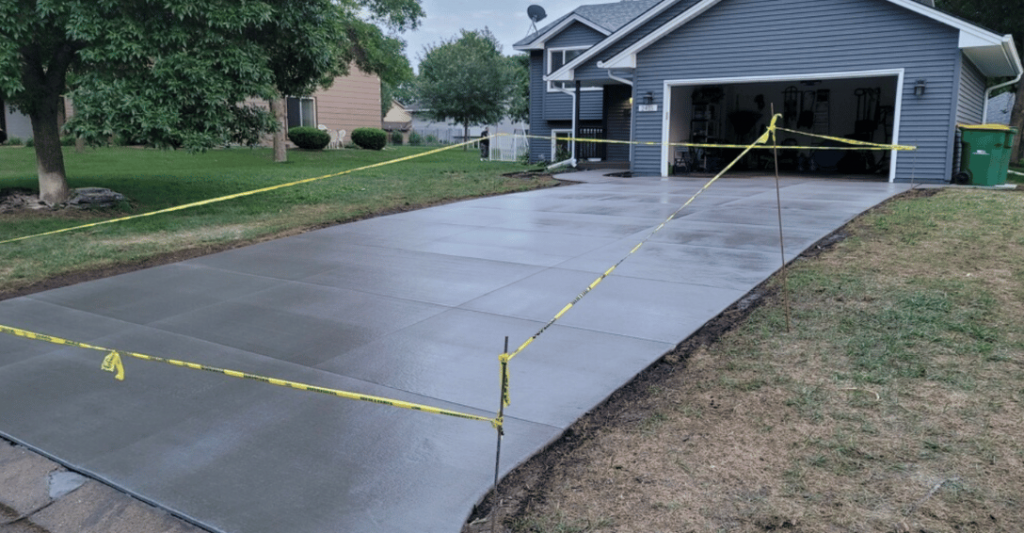
The Complete Guide to Concrete Driveways
Concrete Driveways
Installing a new concrete driveway? This comprehensive guide covers everything you need to know, from the different types of concrete driveways, materials used, thickness and drainage considerations, to reinforcement, jointing, and finishing techniques.
Types of Concrete Driveways
There are several options when it comes to concrete driveway types, each with their own aesthetics, durability, and maintenance requirements:
- Standard Concrete Driveways: The most basic type, consisting of a gray concrete mix. Durable and low maintenance.
- Stamped Concrete Driveways: Molded and imprinted with patterns for a decorative look. More expensive but very durable.
- Exposed Aggregate Driveways: The top layer of cement is washed away to reveal the aggregate for a coarse, stone-like texture. Requires resealing.
- Colored Concrete Driveways: Concrete integrally colored during mixing for vibrant hues. Chips and stains can be added too. Sealing recommended.
Materials
The key materials that go into concrete are:
- Portland cement: Binds the concrete mix. Critical for strength and durability.
- Aggregate (sand, gravel): Adds bulk and reinforcement to the concrete. gravel improves strength.
- Water: Reacts with cement to hydrate and harden the concrete. The right water amount ensures proper curing.
- Admixtures: Added to achieve desired properties like workability or color.
Thickness
Concrete driveway thickness is a crucial structural consideration:
- Standard Thickness: 4-6 inches is typical for residential driveways.
- Increased Thickness: 6 inches or more recommended for high traffic areas. Prioritize thickness over steel reinforcement.
Thickness plays a major role in driveway longevity and prevention of cracks. An adequately thick foundation disperses weight properly.
Drainage
Water drainage prevents standing water and driveway cracks:
- Surface Slope: 1/4 inch per foot minimum slope for efficient runoff. Use grading if needed.
- Drainage Systems: Channels, drains and permeable concrete facilitate drainage. Key around heavy runoff areas.
Proper drainage also prevents freeze-thaw damage and vegetation growth in cracks.
Reinforcement
Adding reinforcement improves concrete strength and durability:
- Steel Rebar: Best for reinforcement but requires experienced installation.
- Wire Mesh: Easy to install but not as strong. Places nearer to the top.
- Fiber Reinforcement: Polypropylene fibers mixed into the concrete. Helps control cracks.
Cover guidelines must be followed to prevent corrosion and spalling.
Jointing
Joints control where cracks occur as concrete shrinks:
- Control Joints: Sawcuts or formed grooves that weaken the top section to induce vertical cracks. Spacing every 8 – 12 ft.
- Expansion Joints: Fill gaps every 20 – 30 ft with joint sealants allowing expansion and contraction.
Proper jointing is critical for managing cracks and continued structural integrity.

Finishing Techniques
The finishing process impacts aesthetics and function:
- Broom Finish: Popular slip-resistant texture, achieved by dragging a broom across freshly placed concrete.
- Smooth Finish: A flat, even finish is attained with additional floating and troweling. Requires consistent technique.
- Stamped Finish: Molds are pressed into concrete to imprint decorative patterns. Enhanced visual appeal.
- Exposed Aggregate: Top layer removed with acid washing or grinding to reveal aggregates. Provides visual interest and traction.
Be sure to complement the finishing style with your driveway goals. Ongoing sealing is recommended for enhanced durability and appearance.
Proper concrete mix design, grading, drainage, joints, steel placement, timing of finishing steps, and curing are all pivotal for quality, long-lasting concrete driveway construction. Research and hire experienced contractors for best results.
